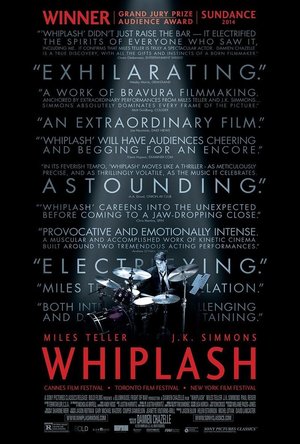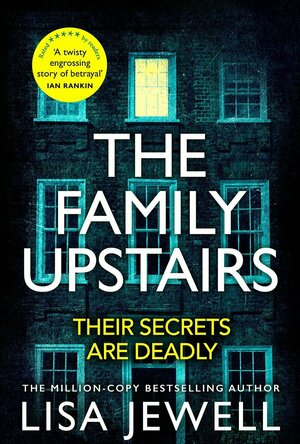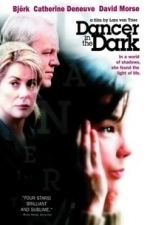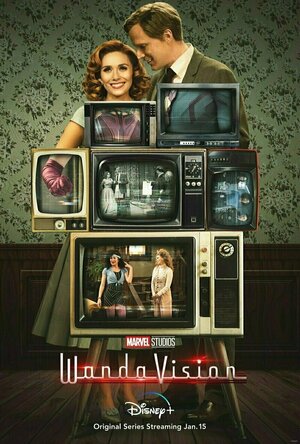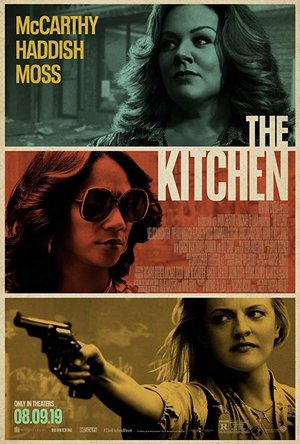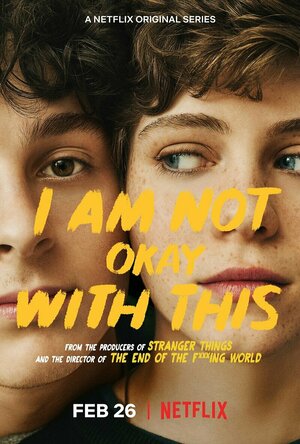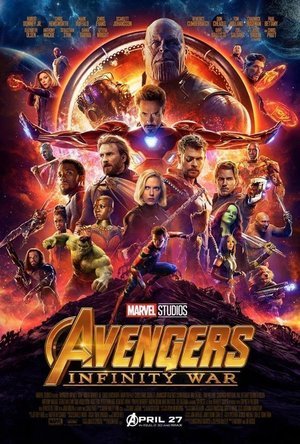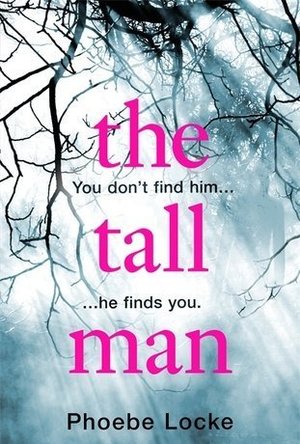Search
Search results
5 Minute Movie Guy (379 KP) rated Whiplash (2014) in Movies
Jul 1, 2019
Whiplash makes for a painfully tense and terrifying learning experience that is nothing short of cinematic brilliance. It'll have you on the edge of your seat, with your heart still pounding even after it's over.
I believe that there’s a desire in all of us to achieve greatness. A deep, internal yearning for importance, respect, and acceptance. We want to be remembered and we want to fulfill a sense of purpose in our lives. For Andrew Nieman (Miles Teller), the central character in the 2014 Best Picture nominated film Whiplash, that desire is to be one of the all-time great jazz drummers. Of course, he knows that accomplishing such a goal will require a firmly fixed focus, an uncompromising dedication, and endless hours of practice. What he surely wasn’t expecting was to run into a teacher like Terence Fletcher (J.K. Simmons), who will stop at nothing in order to push his students to strive to be their very best. Whiplash makes for a painfully tense and terrifying learning experience that is nothing short of cinematic brilliance.
Andrew is a first-year student at the prestigious Shaffer Conservatory of Music in New York where the presence of their great head music conductor, Terence Fletcher, looms over everyone. Fletcher is well-known, respected, and feared. More importantly, he is their ticket to success as musicians. Landing a spot in his band is a coveted high honor. Earning his respect is even greater. Though under Fletcher’s guidance, success doesn’t come easy. He rules over the school like a maniacal dictator and he demands absolute perfection from his students. After all, he has a highly revered reputation to preserve, and he’s not about to let anyone jeopardize it. Andrew finds himself lucky enough to be chosen to rehearse with Fletcher’s band, but he’s soon tested, humiliated, abused, and pushed to the limit by his short-tempered instructor.
Already something of a loner, Andrew delves even deeper within due to pressure from his teacher, turning his passion for music into an unhealthy obsession. He cuts off contact with others and devotes himself entirely to practicing. With fingers bloodied from extensive drumming, he simply bandages them up and keeps at it. Not only is his music playing taking control of his life, but it’s also clearly taking a toll on his mental health. Even more troubling for Andrew is that no matter how hard he tries, Fletcher is never satisfied, and he torments his students until they get things right, even if it means practicing all night. Resentment and tension rapidly rise for Andrew as he approaches his breaking point, resulting in the film’s unforgettably tense conclusion.
Whiplash is no walk in the park. It will have you sitting on the edge of your seat in suspense and terror, with your heart still pounding even after it’s over. It’s an emotional horror for young Andrew who is put through Hell by his mad musical conductor. I was legitimately in fear for his life and sanity. While the movie has given me a greater respect for musicians, and jazz bands in particular, it sure makes me feel glad that I was never in band!
Whiplash is remarkable in its design and execution. The film’s cinematography shows a wonderfully adept eye for camera angles, and gives this low-budget film a distinguished look. The director revels in the closeness of the scene, putting us right alongside Andrew as he comes face-to-face with the ever-menacing Fletcher. It’s unbelievably tense and uncomfortable to watch while he’s being verbally and physically assaulted right before your eyes. The film’s Oscar-winning editing finds the right tempo with knowing when to cut and when to linger. It also expertly accompanies the music with its barrage of clear, fast-paced shots. Of course, Whiplash is also very respectful to its music sources, and it does an amazing job in showcasing the outrageous musical talent on display.
The performances from Miles Teller and J.K. Simmons are sensational. It is estimated that roughly forty percent of the drumming you see by Andrew in Whiplash was actually performed by Teller. Considering the ridiculous amount of skill involved in these jazz band classics, that statistic should not be understated in the least. Teller puts on an incredible display and pours his heart into this movie. He carries the film, appearing in every single scene, and makes for a believable transition of character under the strict discipline of Fletcher. Even more extraordinary is J.K. Simmons, who won the Oscar for Best Supporting Actor with this performance. Simmons injects his character with an intense ferocity that demands your attention. He terrorizes his musicians while conducting with an iron fist. Yet there’s far more to his character than just being a bully. While I disagreed with his abusive methods, I couldn’t argue against his intended result. His character’s extreme conduct will no doubt take things too far for some viewers, but despite all of his anger, I still found Fletcher to be remarkably fascinating. In the end, as deserving of hatred as he may be, I couldn’t help but feel some level of respect for him, and I think that really speaks to the quality of the film.
Whiplash is an emotionally stirring masterpiece that questions how much is too much when it comes to pushing someone to be their best. It also explores the emotional and psychological harm that can result from that level of pressure and abuse. The movie is bolstered by two tense and energetic performances from Miles and Simmons, who are deserving of all of their praise and accolades. You don’t have to be a fan of jazz music to enjoy this phenomenal film. I found the music to be intoxicating, but the real strength of the movie is the teacher and student dynamic between Andrew and Fletcher. With a diabolically delightful and brilliant ending, these two characters have achieved an esteemed level of movie greatness that make Whiplash a must-see!
Andrew is a first-year student at the prestigious Shaffer Conservatory of Music in New York where the presence of their great head music conductor, Terence Fletcher, looms over everyone. Fletcher is well-known, respected, and feared. More importantly, he is their ticket to success as musicians. Landing a spot in his band is a coveted high honor. Earning his respect is even greater. Though under Fletcher’s guidance, success doesn’t come easy. He rules over the school like a maniacal dictator and he demands absolute perfection from his students. After all, he has a highly revered reputation to preserve, and he’s not about to let anyone jeopardize it. Andrew finds himself lucky enough to be chosen to rehearse with Fletcher’s band, but he’s soon tested, humiliated, abused, and pushed to the limit by his short-tempered instructor.
Already something of a loner, Andrew delves even deeper within due to pressure from his teacher, turning his passion for music into an unhealthy obsession. He cuts off contact with others and devotes himself entirely to practicing. With fingers bloodied from extensive drumming, he simply bandages them up and keeps at it. Not only is his music playing taking control of his life, but it’s also clearly taking a toll on his mental health. Even more troubling for Andrew is that no matter how hard he tries, Fletcher is never satisfied, and he torments his students until they get things right, even if it means practicing all night. Resentment and tension rapidly rise for Andrew as he approaches his breaking point, resulting in the film’s unforgettably tense conclusion.
Whiplash is no walk in the park. It will have you sitting on the edge of your seat in suspense and terror, with your heart still pounding even after it’s over. It’s an emotional horror for young Andrew who is put through Hell by his mad musical conductor. I was legitimately in fear for his life and sanity. While the movie has given me a greater respect for musicians, and jazz bands in particular, it sure makes me feel glad that I was never in band!
Whiplash is remarkable in its design and execution. The film’s cinematography shows a wonderfully adept eye for camera angles, and gives this low-budget film a distinguished look. The director revels in the closeness of the scene, putting us right alongside Andrew as he comes face-to-face with the ever-menacing Fletcher. It’s unbelievably tense and uncomfortable to watch while he’s being verbally and physically assaulted right before your eyes. The film’s Oscar-winning editing finds the right tempo with knowing when to cut and when to linger. It also expertly accompanies the music with its barrage of clear, fast-paced shots. Of course, Whiplash is also very respectful to its music sources, and it does an amazing job in showcasing the outrageous musical talent on display.
The performances from Miles Teller and J.K. Simmons are sensational. It is estimated that roughly forty percent of the drumming you see by Andrew in Whiplash was actually performed by Teller. Considering the ridiculous amount of skill involved in these jazz band classics, that statistic should not be understated in the least. Teller puts on an incredible display and pours his heart into this movie. He carries the film, appearing in every single scene, and makes for a believable transition of character under the strict discipline of Fletcher. Even more extraordinary is J.K. Simmons, who won the Oscar for Best Supporting Actor with this performance. Simmons injects his character with an intense ferocity that demands your attention. He terrorizes his musicians while conducting with an iron fist. Yet there’s far more to his character than just being a bully. While I disagreed with his abusive methods, I couldn’t argue against his intended result. His character’s extreme conduct will no doubt take things too far for some viewers, but despite all of his anger, I still found Fletcher to be remarkably fascinating. In the end, as deserving of hatred as he may be, I couldn’t help but feel some level of respect for him, and I think that really speaks to the quality of the film.
Whiplash is an emotionally stirring masterpiece that questions how much is too much when it comes to pushing someone to be their best. It also explores the emotional and psychological harm that can result from that level of pressure and abuse. The movie is bolstered by two tense and energetic performances from Miles and Simmons, who are deserving of all of their praise and accolades. You don’t have to be a fan of jazz music to enjoy this phenomenal film. I found the music to be intoxicating, but the real strength of the movie is the teacher and student dynamic between Andrew and Fletcher. With a diabolically delightful and brilliant ending, these two characters have achieved an esteemed level of movie greatness that make Whiplash a must-see!
<i>Many thanks to the publisher and Netgalley for providing me with a copy of this book in exchange for an honest review </i>
This review can be found on my blog <a href="http://wp.me/p5y0lX-1NL">here</a href>
Skitter is part two of The Hatching trilogy and though it did sort of fall victim to the second book in a trilogy trope it was actually pretty good regardless.
It was a general lull in the mania that was The Hatching that gives you the idea that Boone hasn't finished with the spiders and he hasn't finished telling his story that's for sure.
Skitter is more of a plateau for Boone to pitch the following ideas of where the story is going to go; it follows the same characters from The Hatching and plenty of new ones as they all experience the changes from the first wave of spiders and the transition to the second wave.
The survivalists Gordo, Shotgun and their significant others Amy and Fred become integral to the storyline whereas in the first book they were merely amusing side characters. Development of a weapon that is supposedly able to destroy the spiders takes a good precedent.
Although the series so far has been dark this book was infinitely darker with a lot more death and destruction mostly at the hands of government officials who are in a respect doing what they believe to be the right move. Agent Mike Rich has holed up with his family on an island in the woods and he's feeling particularly twitchy when some folks appear from nowhere.
There was some more scientific deductions about these spiders that potentially could not be actual spiders but could actually be spiders - if that made any sense whatsoever yay. It's left open to have the story continued and hopefully the next book will give me the info I crave.
Skitter wasn't particularly creepy and there was minimal spider action with only a few people being eaten, some weird experiences from civilians and some people jumping the gun with regards to the egg sacs.
In all, the book wrapped up some trailing story arcs nicely and left the story wide open for the next book.
This review can be found on my blog <a href="http://wp.me/p5y0lX-1NL">here</a href>
Skitter is part two of The Hatching trilogy and though it did sort of fall victim to the second book in a trilogy trope it was actually pretty good regardless.
It was a general lull in the mania that was The Hatching that gives you the idea that Boone hasn't finished with the spiders and he hasn't finished telling his story that's for sure.
Skitter is more of a plateau for Boone to pitch the following ideas of where the story is going to go; it follows the same characters from The Hatching and plenty of new ones as they all experience the changes from the first wave of spiders and the transition to the second wave.
The survivalists Gordo, Shotgun and their significant others Amy and Fred become integral to the storyline whereas in the first book they were merely amusing side characters. Development of a weapon that is supposedly able to destroy the spiders takes a good precedent.
Although the series so far has been dark this book was infinitely darker with a lot more death and destruction mostly at the hands of government officials who are in a respect doing what they believe to be the right move. Agent Mike Rich has holed up with his family on an island in the woods and he's feeling particularly twitchy when some folks appear from nowhere.
There was some more scientific deductions about these spiders that potentially could not be actual spiders but could actually be spiders - if that made any sense whatsoever yay. It's left open to have the story continued and hopefully the next book will give me the info I crave.
Skitter wasn't particularly creepy and there was minimal spider action with only a few people being eaten, some weird experiences from civilians and some people jumping the gun with regards to the egg sacs.
In all, the book wrapped up some trailing story arcs nicely and left the story wide open for the next book.
Kristy H (1252 KP) rated The Family Upstairs in Books
Oct 24, 2019
Twenty-five years ago, a tragedy occurred at the large house at 16 Cheyne Walk. When the police arrived, they found three dead adults, an apparent suicide note, and, upstairs, a healthy ten-month-old baby. The neighbors spoke of other children who lived in the house, but there was no trace of them. The house is left in trust, and twenty-five years later, Libby Jones receives the letter she's been waiting for. In it, she learns about her birth parents and that she's inherited their home on Cheyne Walk: making her an instant millionaire. But others have been waiting for this day for years, too, and now Libby is about to learn more about her past and what happened so long ago at Cheyne Walk.
"Now she owns a house in Chelsea and the proportions of her existence have been blown apart."
In typical Lisa Jewell fashion, The Family Upstairs is a dark and twisted story of family secrets, and betrayal. It's told from the perspective of Libby, who inherits the house; Lucy, a mother in France struggling to find shelter and safety for herself and her two children; and Henry, who tells his story from the past, when he lived at Cheyne Walk.
As their three stories intertwine, we learn more about the horrors that happened at the house all those years ago, and how exactly Libby, Lucy, and Henry are tied together. It's an enthralling story and not easy to put down. It's dark, with plenty of twists and turns, and it certainly kept me guessing. There's lots of wondering who is who, and lots of awful things that happen to people. There were a lot of surprises at every turn. I was drawn to Libby, along with Lucy and her children, even if I sometimes wasn't sure if everyone was making the right decisions.
I was really into this book until the end, where the vagueness of the ending disappointed me a bit. But it's still an interesting thriller, no matter what: lots to keep you entertained, tons of dark and twisted bits, and plenty that kept me wondering right up to the end. 4 stars.
"Now she owns a house in Chelsea and the proportions of her existence have been blown apart."
In typical Lisa Jewell fashion, The Family Upstairs is a dark and twisted story of family secrets, and betrayal. It's told from the perspective of Libby, who inherits the house; Lucy, a mother in France struggling to find shelter and safety for herself and her two children; and Henry, who tells his story from the past, when he lived at Cheyne Walk.
As their three stories intertwine, we learn more about the horrors that happened at the house all those years ago, and how exactly Libby, Lucy, and Henry are tied together. It's an enthralling story and not easy to put down. It's dark, with plenty of twists and turns, and it certainly kept me guessing. There's lots of wondering who is who, and lots of awful things that happen to people. There were a lot of surprises at every turn. I was drawn to Libby, along with Lucy and her children, even if I sometimes wasn't sure if everyone was making the right decisions.
I was really into this book until the end, where the vagueness of the ending disappointed me a bit. But it's still an interesting thriller, no matter what: lots to keep you entertained, tons of dark and twisted bits, and plenty that kept me wondering right up to the end. 4 stars.
Leigh J (71 KP) rated Dancer in the Dark (2000) in Movies
Nov 17, 2019 (Updated Nov 17, 2019)
I cried... and cried... and cried
Contains spoilers, click to show
Selma (played by Björk) is an immigrant living and working a Factory job in America to support her son, who also lives with her. She suffers from a degenerative Eye disease that leads of complete blindness and has found out that this condition is hereditary and her son will go blind also if he doesn't get Surgery soon. Determined to save the money for the operation so her Son won't go blind, Selma cheats eye tests and makes out that she's less blind than she really is so that she can continue work. One night, she and her Landlord whom she considers to be a trusted friend, are having a conversation, when he suddenly breaks down and confides in Selma that he is completely broke and cannot tell his Wife, who is used to a life of luxury. Feeling empathy for her friend; Selma reveals to him that she is going blind and that she is saving money for her son to have the operation to save his own sight. Disgustingly, the "friend" steals her money and gives Selma no other option but to kill him, but promise to keep what he told her secret. Selma, in her sweet naivety and generally being a good person, keeps his secret... even when she is arrested and faced with a life or death situation. Will Selma reveal the secret and save herself? Will her son be able to get the operation he needs? Or will Selma's determination not to break the trust of another mean sacrificing everything?
I'll start by saying I'm not a fan of Musicals at all. With the exception of Rocky Horror Picture Show and Grease; they make me cringe in embarrassment. The only reason I gave this a go is because a) I'm a HUGE Lars Von Trier fan and b) Björk!! However,this is a musical that made me cry like a baby almost all the way through. It's incredibly tragic (even the songs) and is sad enough to reduce even the most hardened Movie-goer to a puddle of teary mess. It's such a beautiful Movie that I recommend you watch it without hesitation however... have plenty of Tissues ready. There will be tears.
I'll start by saying I'm not a fan of Musicals at all. With the exception of Rocky Horror Picture Show and Grease; they make me cringe in embarrassment. The only reason I gave this a go is because a) I'm a HUGE Lars Von Trier fan and b) Björk!! However,this is a musical that made me cry like a baby almost all the way through. It's incredibly tragic (even the songs) and is sad enough to reduce even the most hardened Movie-goer to a puddle of teary mess. It's such a beautiful Movie that I recommend you watch it without hesitation however... have plenty of Tissues ready. There will be tears.

Oracle WebLogic Server 12c Administration I Exam IZ0-133: A Comprehensive Certification Guide
Book
Study this comprehensive guide for the Oracle WebLogic Server 12c Administration I Exam IZ0-133. It...
Sarah (7800 KP) rated WandaVision in TV
Mar 7, 2021
A welcome return to the MCU
WandaVision is the latest Marvel series to hit the small screen, arriving in a flood of hype as the first official series to tie in with the rest of the MCU. Initially I hadn’t been interested in this after struggling to enjoy previous series, however after discovering that everyone I know was watching this, FOMO and the fact that we haven’t had a new MCU release since Phase 3 wrapped up with 2019’s Spider-Man: Far From Home, has prompted me to give this a go. And I’m rather glad I did.
WandaVision is set not long after the events of Endgame, and follows Wanda Maximoff (Elizabeth Olsen) and Vision (Paul Bettany) as they live an idyllic suburban life in the small town of Westview. However all is not as it seems; Wanda and Vision appear to be starring in their own 1950s style sitcom, as a odd couple with superpowers trying to blend in with the neighbours, including nosy Agnes (Kathryn Hahn) and committee leader Dotty (Emma Caulfield). Strange things soon start happening, and as Wanda and Vision become increasingly confused and suspicious about their new life, outside of Westfield agent Jimmy Woo (Randall Park), Dr Darcy Lewis (Kat Dennings) and Captain Monica Rambeau (Teyonah Parris) are also trying to figure out what’s going on.
Setting WandaVision in the style of various popular sitcoms from the 1950s onwards is a genius move. BeWitched, I Love Lucy, Malcolm in the Middle and Modern Family to name but a few of the obvious influences on show here, and this changing sitcom style really works and blends very well with the super powered action we know and love from the MCU. I’ll admit that I’m not a massive fan of sitcoms in general and my knowledge of older ones pre-1990 is limited at best, however even I could appreciate the love and care that has gone in to crafting this. It looks amazing and feels so authentic, from everything to the set design, costumes and change in aspect ratio.
It is of course helped by the stellar performances by Elizabeth Olsen. In the MCU so far Wanda has been rather sidelined and Olsen has been given little chance to shine. However she is undoubtedly the star of WandaVision and has been given ample opportunity to show off her versatility and talents, and she certainly does. We see a side of Wanda we’ve never seen before and Olsen’s ability to transform into each decade’s sitcom character is brilliant to watch. It’s a shame then that Bettany’s Vision doesn’t quite match up. No matter the decade, Vision never really seems to change much and while he is funny on occasion, I’m not entirely convinced that seeing more of Vision is a good thing. He’s always been the aloof synthezoid and this may have made him a little too ‘human’. However that said, it was still nice to see a lot more of Bettany than we have done in a while.
Once you get over the sitcom styling, the first couple of episodes are quite slow and had it continued in this vein I may have struggling to keep interested. However in typical Marvel style, it soon picks up and immerses us into the full MCU experience I was expecting. While I don’t want to say much about the plot, from episode 3 onwards I was hooked and the story never felt drawn out, and this wasn’t just due to the short half hour episodes. Unravelling the world of WandaVision was hugely enjoyable and one particular character reappearance in episode 5 had me almost squealing in geeky happiness. The only thing WandaVision is really lacking is the humour and camaraderie that have made the rest of the MCU films into what we love best. Yes there is humour and fun, but this mostly comes from Woo and Darcy, and I think it’s noticeable that the funnier Avengers are missing.
For me, WandaVision isn’t perfect however it was still hugely enjoyable and has definitely given me a new found appreciation for Wanda as a character. And mor important of all, it’s filled a rather large Marvel shaped hole brought on by coronavirus. Bring on The Falcon and the Winter Soldier.
WandaVision is set not long after the events of Endgame, and follows Wanda Maximoff (Elizabeth Olsen) and Vision (Paul Bettany) as they live an idyllic suburban life in the small town of Westview. However all is not as it seems; Wanda and Vision appear to be starring in their own 1950s style sitcom, as a odd couple with superpowers trying to blend in with the neighbours, including nosy Agnes (Kathryn Hahn) and committee leader Dotty (Emma Caulfield). Strange things soon start happening, and as Wanda and Vision become increasingly confused and suspicious about their new life, outside of Westfield agent Jimmy Woo (Randall Park), Dr Darcy Lewis (Kat Dennings) and Captain Monica Rambeau (Teyonah Parris) are also trying to figure out what’s going on.
Setting WandaVision in the style of various popular sitcoms from the 1950s onwards is a genius move. BeWitched, I Love Lucy, Malcolm in the Middle and Modern Family to name but a few of the obvious influences on show here, and this changing sitcom style really works and blends very well with the super powered action we know and love from the MCU. I’ll admit that I’m not a massive fan of sitcoms in general and my knowledge of older ones pre-1990 is limited at best, however even I could appreciate the love and care that has gone in to crafting this. It looks amazing and feels so authentic, from everything to the set design, costumes and change in aspect ratio.
It is of course helped by the stellar performances by Elizabeth Olsen. In the MCU so far Wanda has been rather sidelined and Olsen has been given little chance to shine. However she is undoubtedly the star of WandaVision and has been given ample opportunity to show off her versatility and talents, and she certainly does. We see a side of Wanda we’ve never seen before and Olsen’s ability to transform into each decade’s sitcom character is brilliant to watch. It’s a shame then that Bettany’s Vision doesn’t quite match up. No matter the decade, Vision never really seems to change much and while he is funny on occasion, I’m not entirely convinced that seeing more of Vision is a good thing. He’s always been the aloof synthezoid and this may have made him a little too ‘human’. However that said, it was still nice to see a lot more of Bettany than we have done in a while.
Once you get over the sitcom styling, the first couple of episodes are quite slow and had it continued in this vein I may have struggling to keep interested. However in typical Marvel style, it soon picks up and immerses us into the full MCU experience I was expecting. While I don’t want to say much about the plot, from episode 3 onwards I was hooked and the story never felt drawn out, and this wasn’t just due to the short half hour episodes. Unravelling the world of WandaVision was hugely enjoyable and one particular character reappearance in episode 5 had me almost squealing in geeky happiness. The only thing WandaVision is really lacking is the humour and camaraderie that have made the rest of the MCU films into what we love best. Yes there is humour and fun, but this mostly comes from Woo and Darcy, and I think it’s noticeable that the funnier Avengers are missing.
For me, WandaVision isn’t perfect however it was still hugely enjoyable and has definitely given me a new found appreciation for Wanda as a character. And mor important of all, it’s filled a rather large Marvel shaped hole brought on by coronavirus. Bring on The Falcon and the Winter Soldier.
5 Minute Movie Guy (379 KP) rated The Kitchen (2019) in Movies
Aug 24, 2019
Married into a life with the mob, three women living in Hell’s Kitchen, New York City in the late ‘70s find themselves trapped in their husband’s shadows in Andrea Berloff’s debut film, The Kitchen. Based on a 2014 DC Comics graphic novel by the same name, the film focuses on these three female friends facing the aftermath of their husband’s botched crime and subsequent imprisonment. Their Italian crime family promised to take care of them while their spouses are locked away, but their measly support simply isn’t enough when they’ve got mouths to feed and bills to pay. Tired of being weak and dependent, the ladies band together to take control of their situation by trying to take over the mob.
The Kitchen stars actresses Melissa McCarthy, Tiffany Haddish, and Elisabeth Moss as the female trio who work to rise to the top of their crime family by carrying the dead weight of the lazy men who lead it. McCarthy plays Kathy Brennan, a housewife and mother of two, whose seemingly good-natured husband is clearly involved in the wrong crowd. In spite of that, she appears to have a pleasant life at home, but her heavy reliance on her husband puts her in peril once he’s locked away. On the other hand, Haddish and Moss play Ruby and Claire, who are both victimized and disrespected by their husbands, with Claire even being regularly abused. These characteristics help to define the women and their actions as they attempt to upend the male-dominated establishment.
However, despite The Kitchen’s strong set-up, the characters themselves don’t show much depth beyond this, and the film’s performances leave a lot to be desired. McCarthy felt like she was acting in an entirely different movie. I’ve never seen a more passive and unconvincing crime boss. She’s struggling with a balancing act that sees her going between being tough, funny, ruthless, submissive, and sweet. By comparison to the rest of the movie, her whole character feels off-key. Then there’s Haddish who gives the worst acting performance I’ve seen in quite some time. I’m not really a fan of her brand of humor, but I didn’t like her dramatic turn here either. She just delivers snarky lines with attitude and death glares before walking off-camera in practically every shot she’s in. It’s almost funny how cheesy and over-the-top it is. You can’t just go mean-mugging your way through a whole major motion picture and expect to be taken seriously.
On a more positive note, Moss was much more impressive as Claire, who is fed up with being beaten down and bullied, and is determined to learn how to defend herself. She partners up with Domhnall Gleeson’s hitman character Gabriel who teaches her how to kill. Their relationship ends up being perhaps the most interesting aspect of the whole movie, and it has something of a Bonnie and Clyde quality to it. I only wish we could have seen it fleshed out a bit more.
For all of its potential, especially in terms of portraying female empowerment, The Kitchen regrettably winds up being a generic, inconsistent, and lethargic affair. I personally love the premise of the film. It’s a bad ass statement to any man who has ever said that a woman’s place is in the kitchen. It sticks up a middle finger to sexism by taking the action to the criminal streets of Hell’s Kitchen where the women rise to power. Unfortunately, despite the kick-ass feminist concept, I found that the film’s attempt at empowerment never really manifests into anything meaningful.
Instead, The Kitchen feels messy and uninspired. There isn’t a single scene in the entire film that I would consider to be good. The story is thin, the suspense is absent, the setting is bland, the tone is confusing, and the characters are mostly uninspired. I hate to even say it, but while watching it, I couldn’t help but be reminded of last year’s train-wreck of a film, Gotti, starring John Travolta. I think both of these films had a lot of promise, but seriously failed to deliver. As someone who loves a good gangster movie, I feel really disappointed.
There’s ultimately very little I liked about The Kitchen. The movie lacks a pulse, and the stakes never feel significant, not even as the body count piles up. The set design shows no strong sense of place or time period. Most of the settings outside seemed to be looking at nondescript sidewalks that could have been filmed anywhere. With the setting of Hell’s Kitchen, I can’t help but immediately think of The Godfather. Similarly, the use of The Rolling Stones in the trailer evokes thoughts of Scorsese and Goodfellas. Unfortunately, this movie clearly doesn’t even come close to comparing to either of those classics. This movie’s plot is weak, the betrayals are obvious, and the ending is uncomfortably idiotic. Despite it all, however, I find myself still interested in The Kitchen’s graphic novel at least, because I can’t imagine it being this bad.
The Kitchen stars actresses Melissa McCarthy, Tiffany Haddish, and Elisabeth Moss as the female trio who work to rise to the top of their crime family by carrying the dead weight of the lazy men who lead it. McCarthy plays Kathy Brennan, a housewife and mother of two, whose seemingly good-natured husband is clearly involved in the wrong crowd. In spite of that, she appears to have a pleasant life at home, but her heavy reliance on her husband puts her in peril once he’s locked away. On the other hand, Haddish and Moss play Ruby and Claire, who are both victimized and disrespected by their husbands, with Claire even being regularly abused. These characteristics help to define the women and their actions as they attempt to upend the male-dominated establishment.
However, despite The Kitchen’s strong set-up, the characters themselves don’t show much depth beyond this, and the film’s performances leave a lot to be desired. McCarthy felt like she was acting in an entirely different movie. I’ve never seen a more passive and unconvincing crime boss. She’s struggling with a balancing act that sees her going between being tough, funny, ruthless, submissive, and sweet. By comparison to the rest of the movie, her whole character feels off-key. Then there’s Haddish who gives the worst acting performance I’ve seen in quite some time. I’m not really a fan of her brand of humor, but I didn’t like her dramatic turn here either. She just delivers snarky lines with attitude and death glares before walking off-camera in practically every shot she’s in. It’s almost funny how cheesy and over-the-top it is. You can’t just go mean-mugging your way through a whole major motion picture and expect to be taken seriously.
On a more positive note, Moss was much more impressive as Claire, who is fed up with being beaten down and bullied, and is determined to learn how to defend herself. She partners up with Domhnall Gleeson’s hitman character Gabriel who teaches her how to kill. Their relationship ends up being perhaps the most interesting aspect of the whole movie, and it has something of a Bonnie and Clyde quality to it. I only wish we could have seen it fleshed out a bit more.
For all of its potential, especially in terms of portraying female empowerment, The Kitchen regrettably winds up being a generic, inconsistent, and lethargic affair. I personally love the premise of the film. It’s a bad ass statement to any man who has ever said that a woman’s place is in the kitchen. It sticks up a middle finger to sexism by taking the action to the criminal streets of Hell’s Kitchen where the women rise to power. Unfortunately, despite the kick-ass feminist concept, I found that the film’s attempt at empowerment never really manifests into anything meaningful.
Instead, The Kitchen feels messy and uninspired. There isn’t a single scene in the entire film that I would consider to be good. The story is thin, the suspense is absent, the setting is bland, the tone is confusing, and the characters are mostly uninspired. I hate to even say it, but while watching it, I couldn’t help but be reminded of last year’s train-wreck of a film, Gotti, starring John Travolta. I think both of these films had a lot of promise, but seriously failed to deliver. As someone who loves a good gangster movie, I feel really disappointed.
There’s ultimately very little I liked about The Kitchen. The movie lacks a pulse, and the stakes never feel significant, not even as the body count piles up. The set design shows no strong sense of place or time period. Most of the settings outside seemed to be looking at nondescript sidewalks that could have been filmed anywhere. With the setting of Hell’s Kitchen, I can’t help but immediately think of The Godfather. Similarly, the use of The Rolling Stones in the trailer evokes thoughts of Scorsese and Goodfellas. Unfortunately, this movie clearly doesn’t even come close to comparing to either of those classics. This movie’s plot is weak, the betrayals are obvious, and the ending is uncomfortably idiotic. Despite it all, however, I find myself still interested in The Kitchen’s graphic novel at least, because I can’t imagine it being this bad.
Kirk Bage (1775 KP) rated I Am Not Okay With This in TV
Mar 3, 2020
Proof that Netflix can rule your life, in an OK way, I guess. Every time I have dropped in for the last two weeks, this is the show they went out of their way to push on me. I watched the trailer and thought hmm, I don’t get it… but after relentless publicity I ended up watching the entire first series within 36 hours of its release on February 26th. Which is easy enough to do, as the entire first series only lasts 2 1/2 hours, in 7 x 23 minute easy to swallow episodes. Another nice tactic for the attention deficient generation.
Based on the graphic novels of Charles Forsman, who also gave us The End of the F***ing World – an equally dark edged teen angst story, that has had 2 full seasons of similarly short episodes. It also continues the partnership of that series’ main director, British born Jonathon Entwistle, who seems happily stuck with this genre on his, as yet, limited CV. It stars the quirky charm of Sophia Lillis, best known from the It reboot movies, and Wyatt Oleff, also plucked from that franchise. And, oh yeah, it shares production credits with a small show called Stranger Things; so it has a pop culture pedigree 100% guaranteed to attract a young audience.
In terms of tone and direction, it does wobble at the beginning, but also shows a lot of promise, thanks largely to the watchability of Lillis, who is perfectly cast as a nervy, nerdy teen with a lot of smarts, but not too many friends. The humour is black, the satire subtle, and the delivery is disarmingly adult; on the surface this is a high school comedy, but underneath it is a fucked up, biting exploration of grief, paranoia and anger (mis)management – it pushes boundaries on content, visually and in use of language that only Netflix can endorse and get away with. Which of course is what audiences want!
The premise is that after the suicide of her father, 17 year old Sydney Novak is having some emotional issues beyond the normal teenage stuff of zits on your thighs. As she keeps a secret journal to document her worries and thoughts (heard in voice-over consistently, giving it a definite graphic novel thought bubble vibe) we are in from the start on the possibility she may have a dubious superpower linked to being pissed off.
It takes a while for that aspect to kick in, however, so don’t expect big, showy, superhero set pieces; this is a comedy drama that borrows from every teenage trope available, and is focussed more on the troubles of high school, a single mom and general growing pains. It is funny – I laughed, and found it a charming mix of something really modern feeling, but with retro vibes; it is clearly 2020, but could be 1985, a trick Stranger Things has taught them well.
Really, it is almost all over before it gets started, with these brief episode times – which is smart; no time to waste, so it moves along, and is always endearingly entertaining. In essence, what we have here is a 2 1/2 hour pilot show, chopped into bite sized chunks and released as a tease for the main show, which will be series 2. Think of it as an origin story, if you will. Undoubtedly, that 2nd series is already on the way. Early critical response is solid, and in about another month you will be hearing everyone and their cat talking about it, for sure.
The lack of originality didn’t massively bother me, as you could see what they were trying to do with it, and the large appeal is to recreate a teen world that feels familiar and comfortable, and then play with those preconceptions, choosing the right moments to flip it upside down. Which eventually it does. The final episode of seven is an absolute doozy! Talk about teasing cliff-hangers! They really know how to keep us hooked!
The best thing about it, by a country mile, is the obvious star quality of Sophia Lillis, who must surely use this as a stepping-stone to a fine career, if she can master the emotional scenes as well as the charming quirky ones, at which she already excels. She reminds me a lot of Ellen Page, without the unlikely gravitas… yet. There is time to mature. I will be there for season 2 for sure, so it will be exciting to find out where it all goes next – this is a big opportunity for a BIG little show. I am only half sure they won’t fuck it up…
Based on the graphic novels of Charles Forsman, who also gave us The End of the F***ing World – an equally dark edged teen angst story, that has had 2 full seasons of similarly short episodes. It also continues the partnership of that series’ main director, British born Jonathon Entwistle, who seems happily stuck with this genre on his, as yet, limited CV. It stars the quirky charm of Sophia Lillis, best known from the It reboot movies, and Wyatt Oleff, also plucked from that franchise. And, oh yeah, it shares production credits with a small show called Stranger Things; so it has a pop culture pedigree 100% guaranteed to attract a young audience.
In terms of tone and direction, it does wobble at the beginning, but also shows a lot of promise, thanks largely to the watchability of Lillis, who is perfectly cast as a nervy, nerdy teen with a lot of smarts, but not too many friends. The humour is black, the satire subtle, and the delivery is disarmingly adult; on the surface this is a high school comedy, but underneath it is a fucked up, biting exploration of grief, paranoia and anger (mis)management – it pushes boundaries on content, visually and in use of language that only Netflix can endorse and get away with. Which of course is what audiences want!
The premise is that after the suicide of her father, 17 year old Sydney Novak is having some emotional issues beyond the normal teenage stuff of zits on your thighs. As she keeps a secret journal to document her worries and thoughts (heard in voice-over consistently, giving it a definite graphic novel thought bubble vibe) we are in from the start on the possibility she may have a dubious superpower linked to being pissed off.
It takes a while for that aspect to kick in, however, so don’t expect big, showy, superhero set pieces; this is a comedy drama that borrows from every teenage trope available, and is focussed more on the troubles of high school, a single mom and general growing pains. It is funny – I laughed, and found it a charming mix of something really modern feeling, but with retro vibes; it is clearly 2020, but could be 1985, a trick Stranger Things has taught them well.
Really, it is almost all over before it gets started, with these brief episode times – which is smart; no time to waste, so it moves along, and is always endearingly entertaining. In essence, what we have here is a 2 1/2 hour pilot show, chopped into bite sized chunks and released as a tease for the main show, which will be series 2. Think of it as an origin story, if you will. Undoubtedly, that 2nd series is already on the way. Early critical response is solid, and in about another month you will be hearing everyone and their cat talking about it, for sure.
The lack of originality didn’t massively bother me, as you could see what they were trying to do with it, and the large appeal is to recreate a teen world that feels familiar and comfortable, and then play with those preconceptions, choosing the right moments to flip it upside down. Which eventually it does. The final episode of seven is an absolute doozy! Talk about teasing cliff-hangers! They really know how to keep us hooked!
The best thing about it, by a country mile, is the obvious star quality of Sophia Lillis, who must surely use this as a stepping-stone to a fine career, if she can master the emotional scenes as well as the charming quirky ones, at which she already excels. She reminds me a lot of Ellen Page, without the unlikely gravitas… yet. There is time to mature. I will be there for season 2 for sure, so it will be exciting to find out where it all goes next – this is a big opportunity for a BIG little show. I am only half sure they won’t fuck it up…
Film and stuff (30 KP) rated Avengers: Infinity War (2018) in Movies
May 15, 2019
Thanos is badass
Starring - EVERYONE!! (almost)
Plot - Mad Titan Thanos is hunting down the infinity stones to add to his gauntlet so he can kill half the universe. Avengers, Guardians and co must stop him.
First impressions - Holy crap this film looks excellent. As expected the trailer was the unfinished article and this film looks amazing.
The plot is thin but with 10years of back story, I'd say that's allowed. Thanos is an excellent villain who is fleshed out and well motivated. Something that has been lacking from most MCU Villians.
Were the Russo brothers able to pull off so many characters being in one film?
- in a word, yes. True that some characters get more time than others but the way they jump between plot lines and sub plots feels incredibly well stitched together.
Action?
Action a plenty and very well done. Inventive and on a cosmic scale.
Is it a clever film?
....it has plot holes but they could be explained away if you so wish. My advice, just go with it. It's a universe with rage monsters, Gods and Titans.
Is it worthy of the MCU?
This is the MCU at some of its finest.
Sum up:
This is balls to the wall crazy. Some of the most fun I've had at the cinema in years. I cheered on multiple occasions, found myself holding my breath and gave it a standing ovation.
Plot - Mad Titan Thanos is hunting down the infinity stones to add to his gauntlet so he can kill half the universe. Avengers, Guardians and co must stop him.
First impressions - Holy crap this film looks excellent. As expected the trailer was the unfinished article and this film looks amazing.
The plot is thin but with 10years of back story, I'd say that's allowed. Thanos is an excellent villain who is fleshed out and well motivated. Something that has been lacking from most MCU Villians.
Were the Russo brothers able to pull off so many characters being in one film?
- in a word, yes. True that some characters get more time than others but the way they jump between plot lines and sub plots feels incredibly well stitched together.
Action?
Action a plenty and very well done. Inventive and on a cosmic scale.
Is it a clever film?
....it has plot holes but they could be explained away if you so wish. My advice, just go with it. It's a universe with rage monsters, Gods and Titans.
Is it worthy of the MCU?
This is the MCU at some of its finest.
Sum up:
This is balls to the wall crazy. Some of the most fun I've had at the cinema in years. I cheered on multiple occasions, found myself holding my breath and gave it a standing ovation.
Billie Wichkan (118 KP) rated The Tall Man in Books
May 22, 2019
They went looking for a story. What they found was a nightmare.
It started as nothing, just a scary story passed around between schoolchildren. But for Sadie and her friends, the rumours soon became an unhealthy obsession - and the darkness all too real.
Years later, Sadie's teenage daughter Amber has been charged with murder, and her trial shocks the world. How could such a young girl commit such a terrible crime?
It seems the secrets of Sadie's past have come back to haunt her daughter. And the terrifying truth of what happened all those years ago is finally about to come out . . .
The heart of the novel is the urban legend about the Tall Man who comes from the shadows to take daughters away.
There are three timelines: 1990 where three young girls make a pact with a scary man who loves in the woods, 2000 where a young, new mother disappears leaving behind her baby daughter and confused partner and 2018 where a teenage girl adjusts to life with her mother back in her life. The thing that connects them all is the scary man who lives in the woods.
This is a novel about what lurks in the shadows, and what are shadows if not shades of grey?
I thought this was a brilliant thriller.
Gripping with great characters and psychological suspense.
Recommend reading.
Thank you to Netgalley and the publishers for my copy.
It started as nothing, just a scary story passed around between schoolchildren. But for Sadie and her friends, the rumours soon became an unhealthy obsession - and the darkness all too real.
Years later, Sadie's teenage daughter Amber has been charged with murder, and her trial shocks the world. How could such a young girl commit such a terrible crime?
It seems the secrets of Sadie's past have come back to haunt her daughter. And the terrifying truth of what happened all those years ago is finally about to come out . . .
The heart of the novel is the urban legend about the Tall Man who comes from the shadows to take daughters away.
There are three timelines: 1990 where three young girls make a pact with a scary man who loves in the woods, 2000 where a young, new mother disappears leaving behind her baby daughter and confused partner and 2018 where a teenage girl adjusts to life with her mother back in her life. The thing that connects them all is the scary man who lives in the woods.
This is a novel about what lurks in the shadows, and what are shadows if not shades of grey?
I thought this was a brilliant thriller.
Gripping with great characters and psychological suspense.
Recommend reading.
Thank you to Netgalley and the publishers for my copy.
